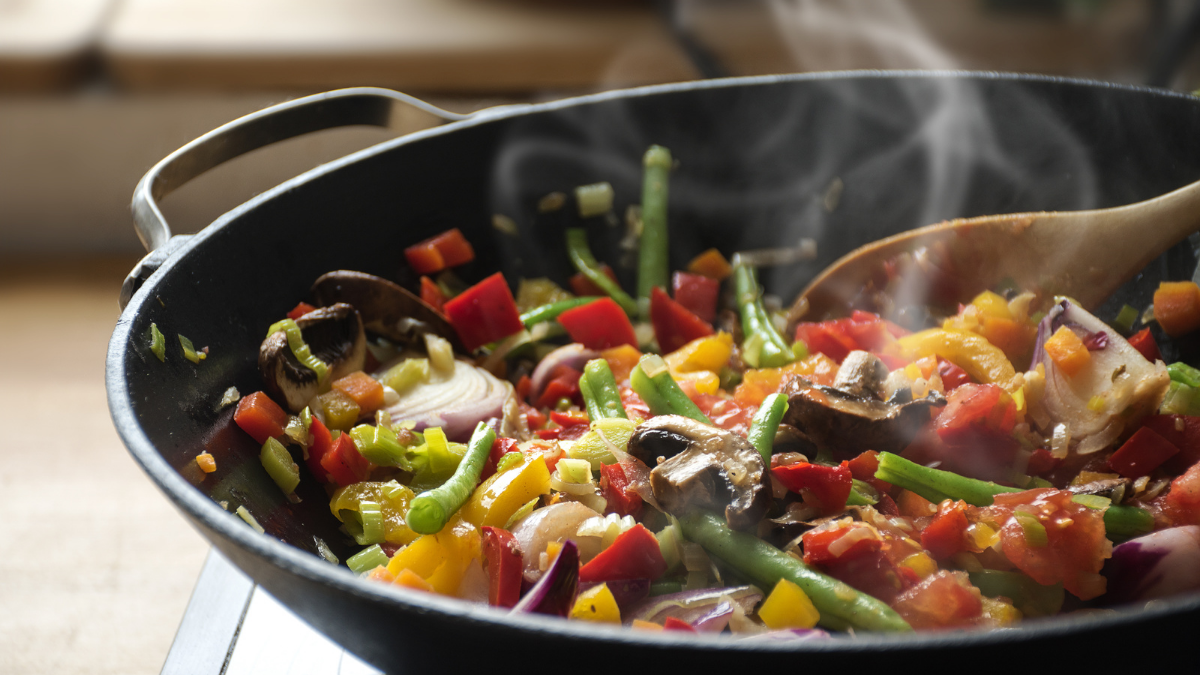
August 30, 2021
How cookware materials can influence the taste of food and what to consider when selecting the best metal for the job.
When preparing a meal, the most important step always appears to be selecting the best ingredients to make a dish with. Rarely is the type of metal a pot or pan is made of considered to be an important contributor to the overall success of the meal, however, the type of metal that a piece of cookware is made of plays a major role in how the food being cooked will turn out. Different metals have specific properties that will determine how the cookware will perform when carrying out specific cooking tasks, such as browning or frying. Arguably the most important property to consider when selecting a type of metal cookware is its thermal conductivity.
Thermal conductivity is a measure of a materials ability to effectively transfer and distribute heat. Materials with high thermal conductivities are quick to take up heat from their environment and are also quicker to lose heat when the surrounding temperature drops. Ideally, the metal that a pot or pan is made of should have a high thermal conductivity so that the food will cook quickly and evenly. This isn’t the case for all scenarios in the kitchen as sometimes using a metal with a lower thermal conductivity can enhance the flavour and quality of the food being cooked.
Some of the most popular metals for designing cookware are stainless steel, cast iron, copper, ceramic and aluminum. None of these metals can both conduct heat efficiently and not alter the taste of the food they are cooking, therefore it is extremely important to select the right type of metal depending on the cooking technique.
Over the past couple of decades, aluminum has been the preferred metal of choice among consumers accounting for over 50% of all cookware sold. Aluminum has a very high thermal conductivity of 205 W/(m/K) which explains its ability to heat up quickly and cook food evenly.
Aluminum cookware is also affordable, relatively lightweight, and durable. Aluminum (along with copper and iron) is known as a reactive metal. If cooking appliances made of these metals are used to prepare highly acidic or alkaline foods such as tomatoes or lemon juice, the food being cooked will likely take on a metallic and bitter flavour.
Another problem can arise when cooking lighter coloured foods such as eggs which can develop grey streaks or show discolouration. Reactive cookware is better to use for tasks such as boiling water, sautéing vegetables or searing meat.
Most aluminum cookware also incorporates a non-stick coating that will protect the food from having a reaction with the metal. Manufacturers have developed a process known as anodization that is used for treating aluminum while still retaining the metals high thermal conductivity.
This process involves a series of electrochemical baths that thicken the oxide film that forms naturally on aluminum. As this coating hardens, the metal becomes more scratch resistant and will no longer react with acidic or alkaline foods.
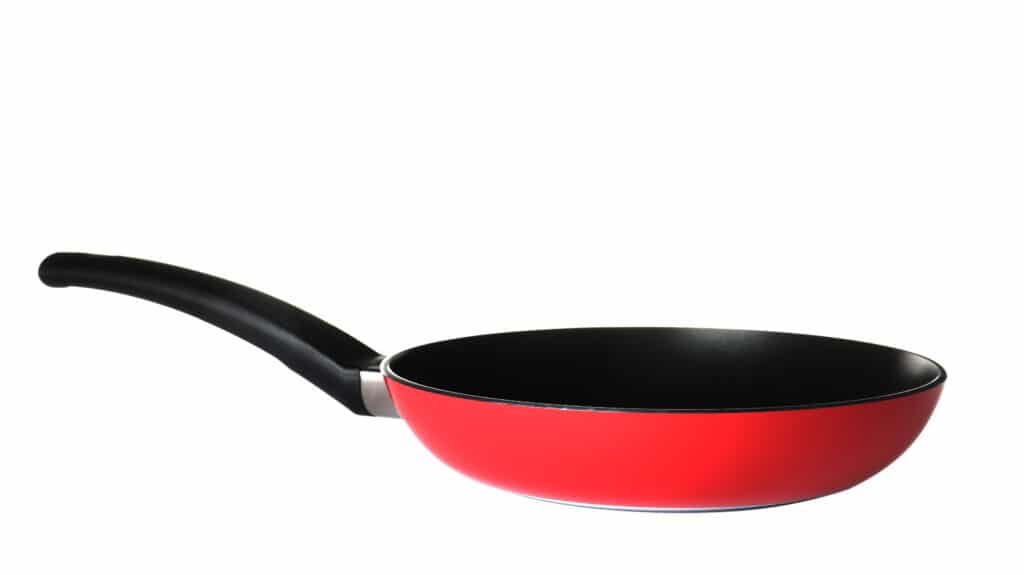
Figure 1: Aluminum anodized (treated) non-stick frying pan.
Copper has an extremely high thermal conductivity value of 385 W/(m/K) which is twice that of aluminum, the leading cooking appliance metal. Authentic copper pots and pans are ideal to use when trying to heat up and/or cool down food quickly.
They are most often used for high heat searing or for gently simmering delicate sauces that require very specific cooking temperatures. Like aluminum, copper is also a reactive metal and should not be used when cooking acidic foods. If using a pure copper pot or pan there is also a chance that the food being cooked will pick up metal from these pans that may be ingested during food consumption.
This can be problematic in the case of copper which has been known to cause nausea, vomiting or diarrhea if sufficient quantities are consumed. Most of the time there is not an issue with the small amount of copper than may be dissolved into food when using this cookware, however, this is something to look out for if these pots and pans are being used daily.
In an attempt to avoid potential contamination of food, copper cookware is often lined with tin or stainless steel. Cladding metal is another way to harness the benefits of a highly thermally conductive metal such as copper without having to worry about health risks. Cladding refers to the fusion of different metals to construct a piece of cookware.
Outer layers are normally a non-reactive metal such as stainless steel and inner layers are a more thermally conductive metal such as aluminum or copper. Cladding can also refer to adding a layer of a metal with a high thermal conductivity to the bottom layer of a pan to promote more effective heat transfer.
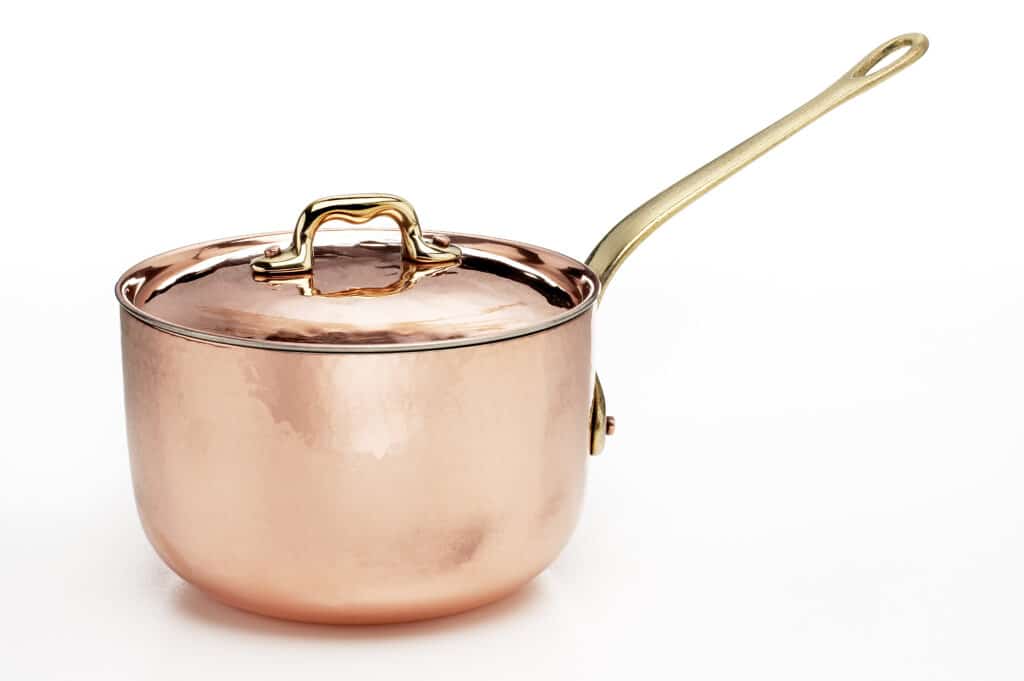
Figure 2: Pure copper metal pot.
A pot or pan that is made of 100% stainless steel is completely non-reactive (meaning you can cook any type of food on it), inexpensive, dishwasher, oven, and broiler safe. The more basic models of stainless-steel cookware generally have poor heat transfer and distribution which makes cooking temperature sensitive dishes very challenging.
This is due to stainless steel having one of the lowest thermal conductivities of all metal alloys at only 45 W/(m/K). Because of its minimal ability to transfer heat effectively, most stainless-steel cookware incorporates either a copper or aluminum core/bottom.
Stainless-steel cookware can also give off small amounts of nickel, iron, and chromium when heated to higher temperatures. Ingesting iron and chromium can be beneficial, however, depending on how high the cooking temperature is, the amount of nickel given off can potentially be harmful to individuals with a nickel sensitivity.
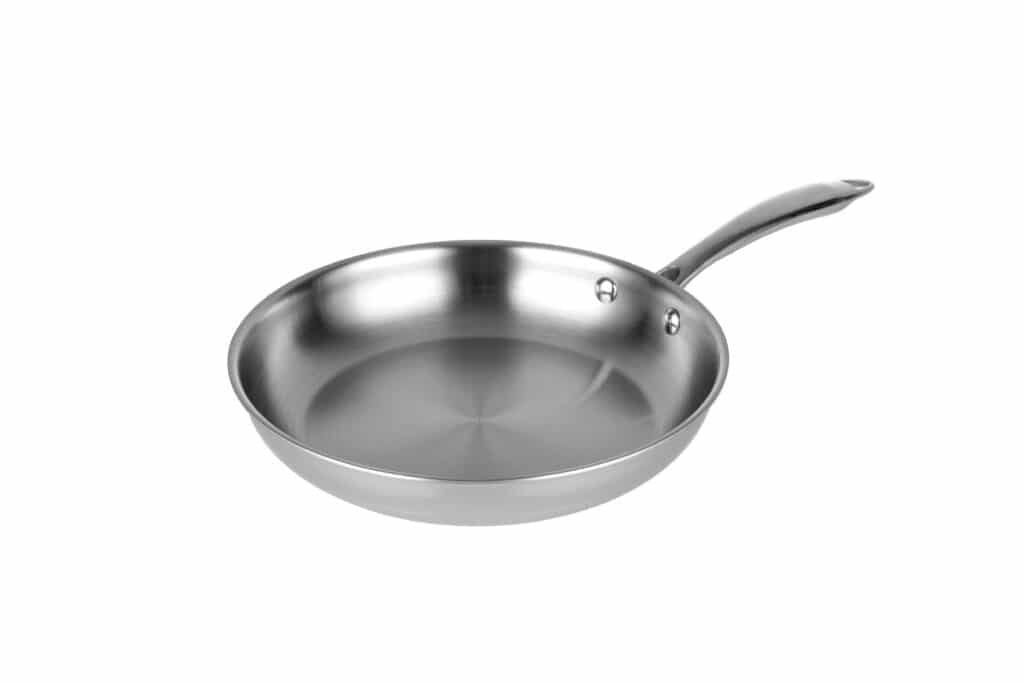
Figure 3: Stainless-steel pan.
Cast iron has been used to prepare food for nearly 3000 years with it initially being used in China to cook rice. Cast iron cookware is extremely strong, inexpensive, and great to use when browning, baking, and frying food. Cooking with an uncoated iron pan can also help individuals increase their daily iron intake by almost doubling the amount of iron that is found naturally in some foods.
Iron is a non-reactive metal and can be used to cook almost any type of food. Ceramic cookware is another material with a naturally low thermal conductivity. Ceramic pots and pans are not ideal to use when trying to quickly heat up food or for searing and frying.
Once a ceramic pot does get hot it will retain that heat for an extended period of time due to its insulating properties. Both enameled cast iron and ceramic cookware are excellent to use when slow-cooking dishes such as stews or for tenderizing meat.
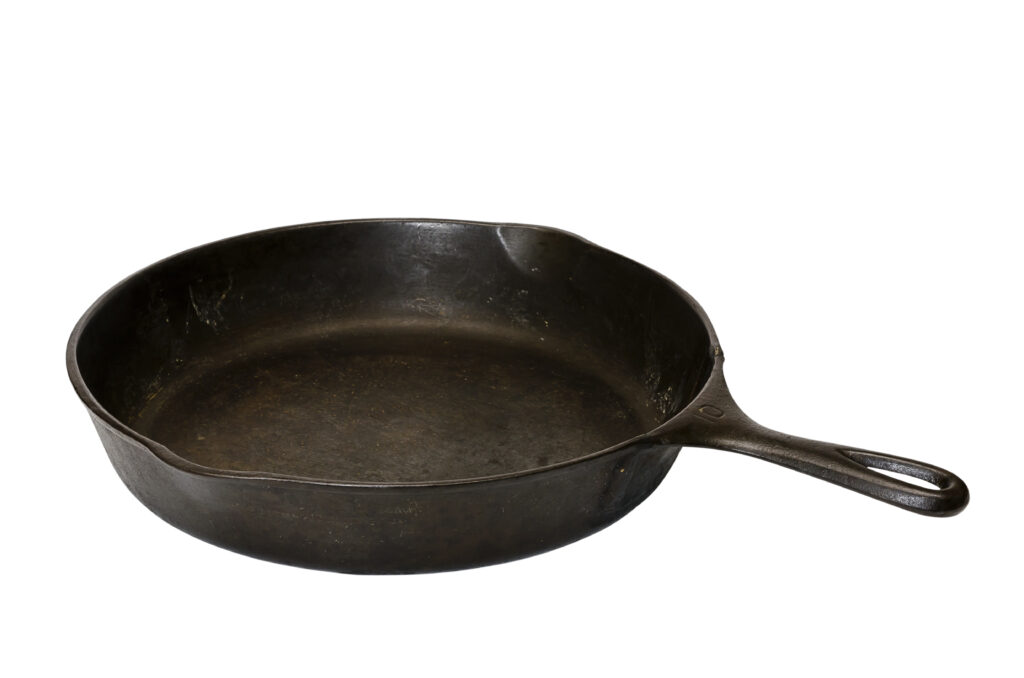
Figure 4: Cast iron skillet.
The most important recommendation that cooking professionals offer for trying to select a cookware material is to choose one that best suits the cooking technique. For example, if stewing or slow cooking food it is better to use a material with a lower thermal conductivity such as enameled cast iron or ceramic.
On the other hand, for quickly frying foods or trying to boil water it is more optimal to use a material with a higher thermal conductivity such as copper or aluminum. Manufacturers have also designed cookware that can harness the benefits of both thermally conductive metals such as copper and aluminum and non-reactive materials like stainless-steel by cladding and incorporating both materials into designing a piece of cookware.
Blumenthal, D. Food, U. S., & Administration, D. (1990). Is that Newfangled Cookware Safe? U.S Food and Drug Administration. https://books.google.ca/books?id=Yok6CsaJ77oC
Christensen, E. (2019, May 3). Food Science: Explaining Reactive and Non-Reactive Cookware. Retrieved from https://www.thekitchn.com/food-science-explaining-reacti-73723
Cookware Buying Guide. (n.d.). Retrieved from https://www.consumerreports.org/cro/cookware/buying-guide/index.htm
Kuligowski, J., & Halperin, K. M. (1992). Stainless steel cookware as a significant source of nickel, chromium, and iron. Archives of Environmental Contamination and Toxicology, 23(2), 211–215. doi: 10.1007/bf00212277